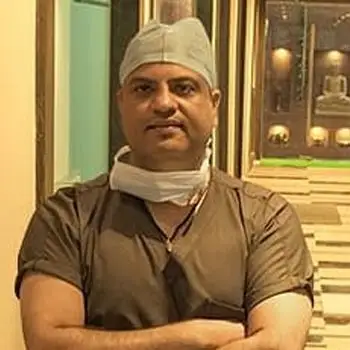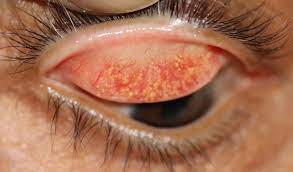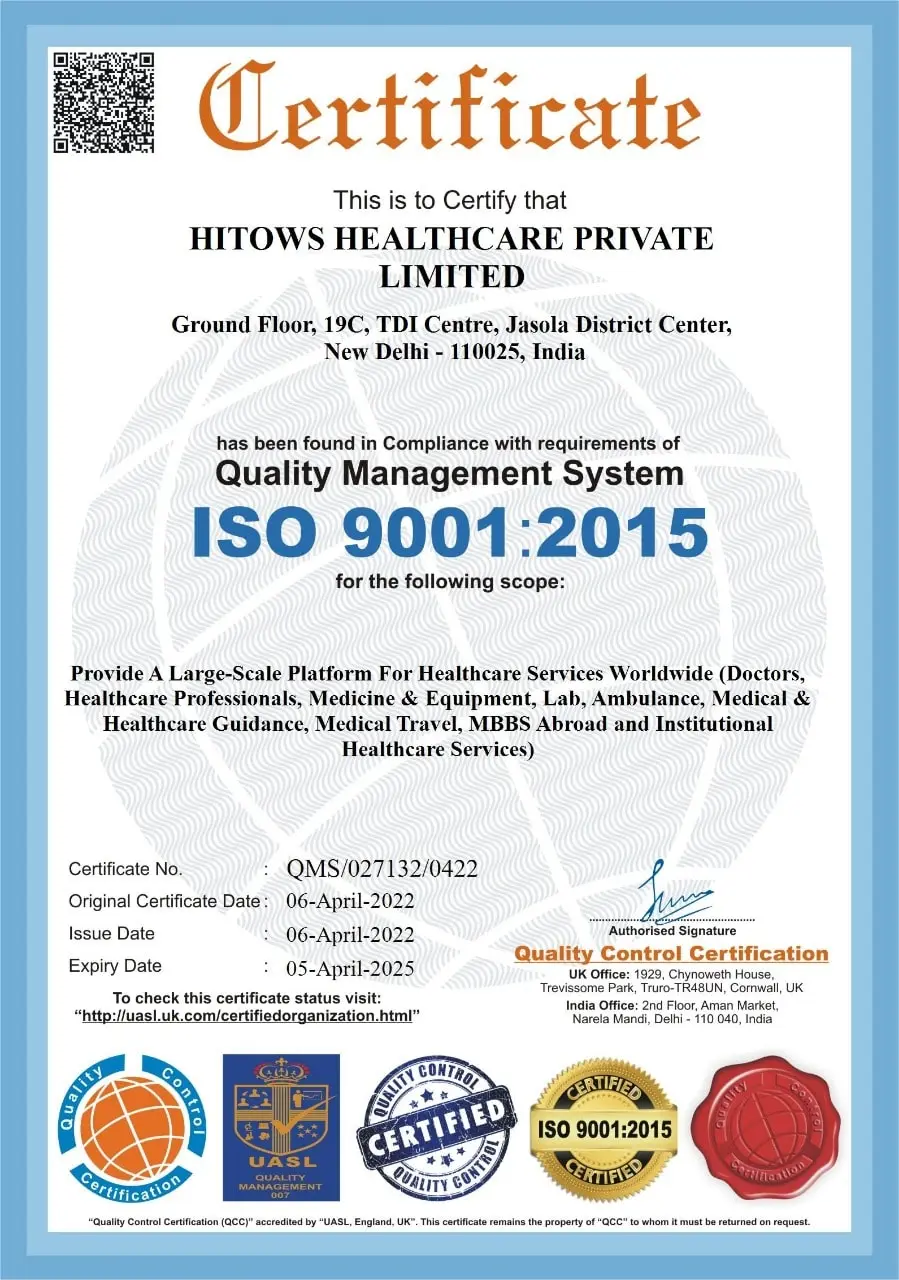CORNEAL AND OCULAR SURFACE PROCEDURES-Concretions remova
India
-
Our Price USD 112
-
Hospital Price USD 118
-
You Save : USD 6
Booking Amount: USD 11. Pay Remaining 90% at the hospital.
Book NowAdditional Credit
Among the important extras we offer as part of the Additional Credit are the following:
-
Site Tourism For The Patient & Attendant
-
Airport Pick & Drop Service
-
Ambulance service at airport
-
Priority appointments with The Doctor
-
Cancel Easily Anytime with Full Refund
-
Room Upgradation
-
Free Online Doctor Consultation Valued at USD 20
-
Free hotel Stay for 5 to 7 days Accordingly
-
Welcome Kit at Arrival
-
Interpreter
-
Medical Visa Assistance
What is Included?
- Doctor consultation charges
- Lab tests and diagnostic charges
- Room charges inside hospital during the procedure
- Surgeon Fee
- Cost of implant
- Nursing charges
- Hospital surgery suite charges
- Anesthesia charges
- Routine medicines and routine consumables (bandages, dressings etc.)
- Food and Beverages inside hospital stay for patient and one attendant.
What is not Included?
- Extra Radiology Investigations
- Healthcare Professionals Charges of other consultations.
- Other Requested Services such as Laundry etc.
- Additional Pharmaceutical Products and Medicines After Discharge from Hospital.
- Management of Conditions Unrelated to Procedures or Pre-Existing.
- The cost of any additional implants will be in addition to the package cost.
Package Description
CORNEAL AND OCULAR SURFACE PROCEDURES-Concretions removal:
Concretions arise when epithelial cells and inspissated mucus accumulate in depressions called Henle glands. Conjunctival concretions have a variety of causes and risk factors, although they are most typically linked to ageing and chronic conjunctivitis.
Conjunctival concretions with symptoms: If concretions erode through the epithelium and cause symptoms, an eye specialist can typically remove them with a small-gauge needle at the slit lamp (bio-microscope) under topical surface anaesthetic.
The majority of concretions are asymptomatic and do not require treatment. The individual concretions may be removed if the patient is symptomatic. The lid is everted to expose the palpebral conjunctival surface, and proparacaine hydrochloride 0.5 percent drops are administered.
Disease Overview:
Chronic meibomitis
Meibomitis is a condition in which the small oil glands that border your upper and lower eyelids become inflamed over time. Meibum is a particular oil produced by the meibomian glands that helps to lubricate your eyes and keep your tears from evaporating. When your meibomian glands get clogged, the amount and nature of your meibum changes.
Disease Signs and Symptoms:
Meibomitis has a wide variety of symptoms, from minor to severe. Your eyes will be inflamed in general, and your vision may be fuzzy.
It's also possible that your eyes are:
red, swollen, dry, itchy, gritty, sensitive to light, and sore to the touch
A stye, which looks as a red, painful lump on the eyelid, is also possible. An infection as a result of a plugged oil gland can cause this.
Disease Causes:
The aetiology of meibomian gland obstruction, which leads to meibomitis, is unknown.
It's possible that it's bacterial, according to researchers. Studies are still ongoing. The microorganisms on the eye's surface and how they effect meibum are being studied by Trusted Source.
The following are some of the variables linked to an increased risk of meibomitis:
Aging
You create less meibum as you get older, and the meibum you do make has a different composition. The number of meibomian glands in your body decreases as well.
Stress caused by the environment
Living or working in a low-humidity environment
Trusted Source has the ability to alter your meibum output. This covers both air conditioning and heating in the winter.
Contact lenses
Wearing contact lenses has been linked to a decrease in meibum and other meibomian gland disorders. The longer you wear contact lenses, the more the meibomian glands are affected.
Diet
Omega-3 fatty acid deficiency
Meibomitis can be caused by a lack of Trusted Source in your diet. Flaxseed oil, fish oil, and olive oil all contain these fatty acids.
Hormones
Estrogens and androgens are two types of hormones.
The makeup of your meibum may be affected by Trusted Source. Androgens increase meibum secretion while also reducing inflammation. Estrogens are known to cause inflammation.
Drugs
Retinoic acid is a kind of vitamin A.
The volume of meibum produced and the function of the meibomian glands may both be altered by Trusted Source. Acne is treated with topical retinoic acid.
Glaucoma medicines and topical epinephrine
The function of the meibomian gland has been discovered to be altered by Trusted Source. More research is needed to evaluate the impact of preservatives and how long they should be used.
Use of a computer screen
The usage of a computer screen has been linked to MGD. More research is needed to see if computer use contributes to the development of MGD or exacerbates an existing problem.
Disease Diagnosis:
An eye specialist, such as an ophthalmologist or an optometrist, will make the diagnosis. Your medical history and symptoms will be discussed with the doctor.
They'll use sophisticated equipment to inspect your eyes and eyelids. It's possible that you'll be given drops to dilate your pupils. A sample of your lids may be swabbed by the doctor for bacterial investigation.
A slit lamp exam uses a low-power microscope and a high-intensity light to examine your eyes in more detail. This will be used by the doctor to check for any abnormalities in your meibomian glands.
The slit lamp has evolved into a portable pen-shaped gadget with LED lights and a camera.
Other methods of diagnosis include:
- putting pressure on your eyelids to measure the meibomian gland output using transillumination to view at the meibomian glands through your eyelids using a specific tape to blot your eyelid borders to measure lipids
- Different ways of assessing the severity of MGD and meibomitis have been proposed by researchers, but unified criteria have yet to be recognised.
- Because meibomitis may be accompanied with dry eye or corneal edoema, it can be difficult to diagnose.
Disease Treatment
The severity of your symptoms will determine how you are treated for meibomitis. If your symptoms continue, your doctor may begin with conservative treatment and later add various types of therapies.
New therapies are in the works, and research is still going on.
Hygiene of the lid
The initial therapy is to keep the lids clean. The following items should be included in your everyday routine:
lid massage, as directed by your doctor lid scrub or lid cleanser warm compresses for your lids, for at least 1 to 2 minutes twice a day (you can also use baby shampoo)
To lubricate your eyes, use eye drops, tears, gels, or ointments as directed by your doctor.
Lid warming and massaging devices are new on the market to help with lid cleanliness. There are also new lubricants on the market that are being researched.
Drugs
Systemic antibiotics including doxycycline, minocycline, and azithromycin may be prescribed by your doctor. These antibiotics have been demonstrated in tests to minimise inflammation and improve the meibum. Make important to talk to your doctor about the potential adverse effects of these medications.
To decrease inflammation, the doctor may also prescribe topical corticosteroids. Again, talk to your doctor about the possible side effects.
Cyclosporine A is another prescription medicine that your doctor may give. It's an immunosuppressive medication. It has been demonstrated to be useful in studies, although the most effective dose is still up for discussion.
Supplements available over-the-counter
Supplements containing omega-3 essential fatty acids (flaxseed oil) are advised. These have been demonstrated in studies to help with MGD and meibomitis symptoms. They can be purchased over-the-counter (OTC).
Surgical treatments
Surgery to open the meibomian glands may be recommended in some circumstances.
Information related to Treatment
Package Details
Days in Hospital
1 Days
Days in Hotel
*
2 Days
Room Type
Private

Treating Doctor
Dr. Suraj Munjal
Ophthalmologist- Retina Surgeon, Cataract Surgeon, Lasik surgeon, Vitreo Retina Surgeon, Eyelid Surgery, Trabeculectomy, Vitreoretinal Surgery, Orbital & Oculoplastic surgery, Refractive surgery, Retina Examination, Glaucoma Evaluation / Treatment, Canaloplasty, Corneal Surgery, Eye Muscle Surgery, Orbital Surgery, Anterior Segment Surgery, Orbital Decompression Surgery for Thyroid Eye Disease, Orbital Trauma, Diabetic Retinopahy, YAG laser Posterior Capsulotomy, Anterior Retinal Cryotherapy, Retinal Surgery, Lens for Keratoconus
The Sight Avenue Eye Hospital Delhi, India
19 Years of Experience

Treating Doctor
Dr. Sanjay Chaudhary
Ophthalmologist- Retina Surgeon, Cataract Surgeon, Lasik surgeon, Glaucoma Specialist, ICL Surgeon, Eyelid Surgery, Vitreoretinal Surgery, Refractive surgery, Corneal Surgery, Eyelid Surgery, Anterior Segment Surgery, Corneal transplantation, Refractive surgery
Eye7 Chaudhary Eye Centre New Delhi, India
30 Years of Experience


